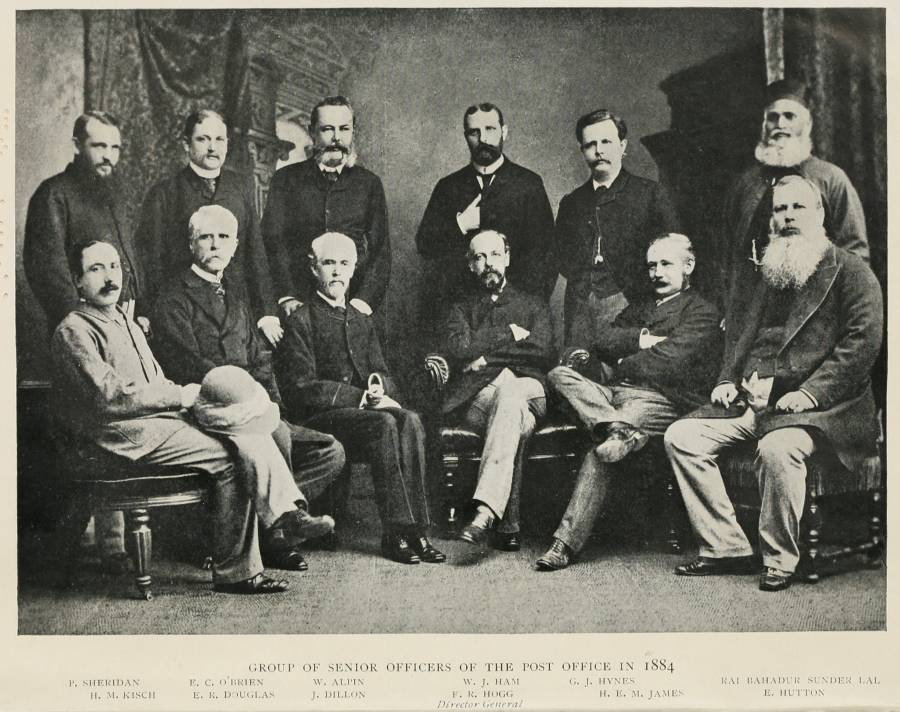THE POST OFFICE OF INDIA

P. SHERIDAN E. C. O'BRIEN W. ALPIN W. J. HAM G. J. HYNES RAI BAHADUR SUNDER LAL
H. M. KISCH E. R. DOUGLAS J. DILLON F. R. HOGG H. E. M. JAMES E. HUTTON
Director General
THE POST OFFICE OF INDIA AND ITS STORY
BY GEOFFREY CLARKE
INDIAN CIVIL SERVICE
WITH SIXTEEN ILLUSTRATIONS
LONDON: JOHN LANE THE BODLEY HEAD
NEW YORK: JOHN LANE COMPANY MCMXXI
PREFACE
When I first decided to write a short accountof the Post Office of India my intention wasto close my story with the amalgamation ofthe Post Office and the Telegraph Department,which took place in 1913. Publication has beendelayed for various reasons, chiefly owing to the outbreakof the war in 1914, and since then many strange thingshave happened. Consequently I have had to revise severalchapters and felt compelled to write one upon the wonderfulwork done by the Indian Post Office in the GreatWar. I have also brought the statistical information up tothe year 1918. Much of the matter referring to the earlyposts in India has already been given in Mr. Hamilton'sbook, An Outline of Postal History and Practice. This isonly natural, as we have both drawn from the samesources—namely, the records of the Postal Directorate inCalcutta. I have tried to tell the story of the Post Officein such a way as to be interesting to the general readeras well as useful to the student. The ordinary routine ofpost office work is not exciting, but the effect of thework, the benefits it confers, the dependence of thepublic upon its proper execution, are themes to inspirethe pen of a romantic writer. "The Romance of thePost Office" was the title of a delightful article in[vi]Blackwood's Magazine by Sir Arthur Fanshawe, lateDirector-General of the Department, and to this articleI must acknowledge my obligations for several passagesin the book.
I am much indebted to Mr. R. W. Hanson and Mr.F. F. Shout, Assistant Directors-General of the PostOffice of India, for their assistance in producing thiswork. Mr. Hanson is responsible for the chapter on"The Post Office in Mesopotamia and the Persian Gulf,"and Mr. Shout for the chapter on "The Sea PostOffice" and the paragraphs dealing with the DistrictPost, as well as for the Index.
The chapter upon Indian stamps is based largely uponThe Postage and Telegraph Stamps of British India, byHausburg, Stewart-Wilson and Crofton, published byMessrs. Stanley Gibbons, and I am greatly indebtedto Messrs. Stanley Gibbons for the loan of their blocksand for permission to use them in this book.